How to Plan The Mount Everest Base Camp Tour
The highest mountain peak on the planet, Mount Everest sits a massive 8,848 meters (29,029 feet) and is one of the most visited locations on the Tibetan plateau. Sitting on the border between Nepal and China’s Tibet Autonomous Region (TAR), this huge mountain can be visited from either side and has base camps both in the north on the Tibetan side and in the south on the Nepali side. Known in Nepal as Sagarmatha, in Tibet, the mountain is known as Chomolungma, and the border between Nepal and China runs directly across the summit.
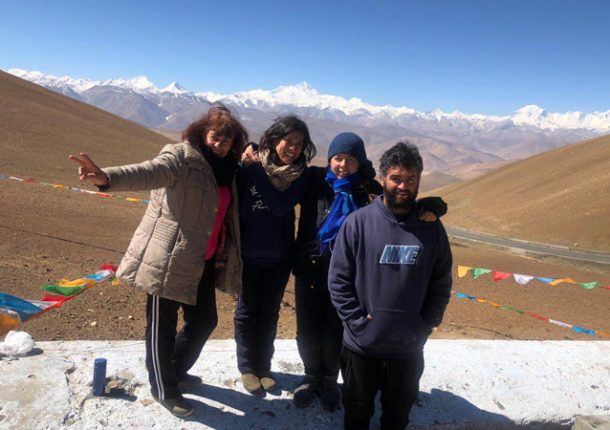
For travelers in Tibet, a pre-arranged tour is required to get to the base camp. While it is possible to trek all the way to the southern Base camp in Nepal without the need for a guide or a guided tour, a professional guide is required for visiting the base camp in Tibet, as there are restrictions on independent travel in Tibet. Only through a pre-arranged tour with a registered Tibetan travel agency can you reach the world’s highest mountain on the vast Tibetan plateau.
Table of Contents
Everest Base Camp, Tibet
The base camp in Tibet lies in the far west of the region, close to the border with Nepal. Sitting at an elevation of 5,200 meters, the base camp can actually be accessed by road all the way from Lhasa, the Tibetan capital. The route to the base camp starts after you arrive in Lhasa and finish your tour of the city.
As you depart from the capital, you will travel along the G318 Friendship Highway, taking a short detour along the way to stop at Lake Yamdrok to the southwest of the Tibetan capital and the beautiful town of Gyantse, with its stunning 32-meter Kumbum stupa.
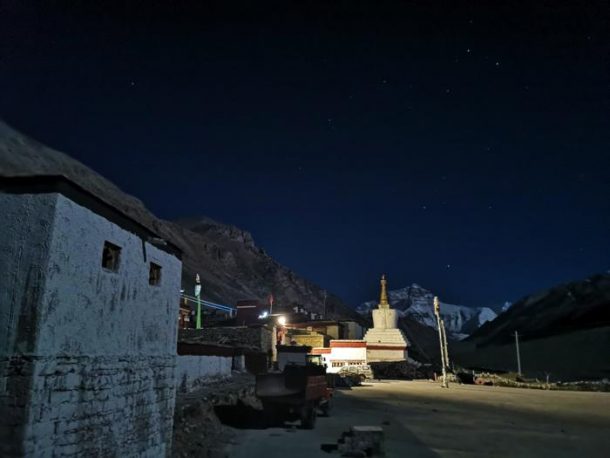
After reaching Shigatse, at 3,850 meters ASL, where you will stop to visit the famous Tashilhunpo Monastery, you continue on the G318 through Lhatse (4,012m) and into Tingri (4,300m), where you turn off to head for Rongbuk Monastery and the base camp itself along the smaller Zhufeng Road. Rongbuk Monastery, which lies at the end of the glacial moraine of the Rongbuk Glacier.
It is the world’s highest Buddhist Monastery, and is the closest you can get to the base camp by driving. From there, new eco-buses run to the base camp to prevent damage of the delicate environment by lots of vehicles, or you can walk the 2km to the site in around an hour.
Weather at Everest Base Camp
At its high altitude location, the weather at EBC is a typical mountain plateau climate, although it can be changeable with little notice. Temperatures at the base camp range from minus 20 degrees at night in the winter months too as high as 22 degrees in the summer during the day. However, neither of these times are very good for visiting the mountain, as the winter months are often too cold, and the summer is the monsoon time in Tibet.
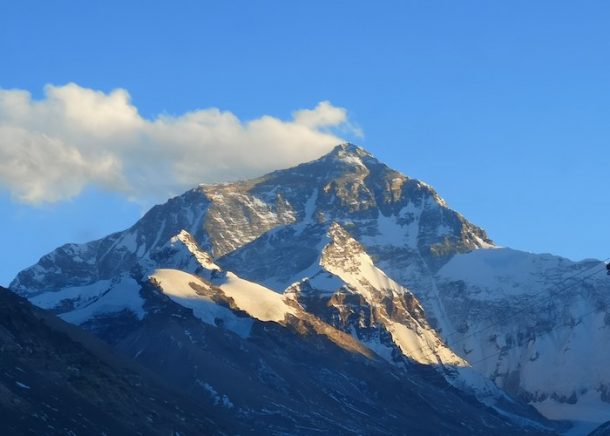
For most travelers, the best times to visit EBC in Tibet is in the spring or autumn, from April to May and October to November. Spring temperatures range from -1 degree at night to as high as 15 degrees during the day, and the bright sunshine and clear skies make it ideal for viewing the summit of the mountain. Spring is also the time of the window for climbing on Everest, which lasts for just three weeks in May.
Autumn temperatures can range from around -8 degrees at night to as high as 17 degrees during the day. Warmer days are often followed by colder nights, which can be a concern for some tourists, though it is still a good time to come to Tibet. Whichever time of year you come here to visit EBC, you will need to have plenty of warm clothing for the nights and evenings, as it can get pretty cold once the sun goes down, and with a thinner atmosphere, the air holds less heat at night from its daytime sunshine.
While it may be cold at night, it can be hot and bright in the daytime, and the thinner atmosphere also produces more of the harsh UV rays of the sun that can damage skin and cause sunburn and sun stroke, so a hat and sun cream are very necessary.
How to get to Everest Base Camp
The trip to EBC from Lhasa is the classic tour to Mount Everest in Tibet and is still one of the most popular tours on the plateau. After transferring to Lhasa from mainland China by train or flight, you will get the chance to explore the this amazing City of Sunshine for the first three days as you acclimatize to the increased altitude of the Tibetan capital.
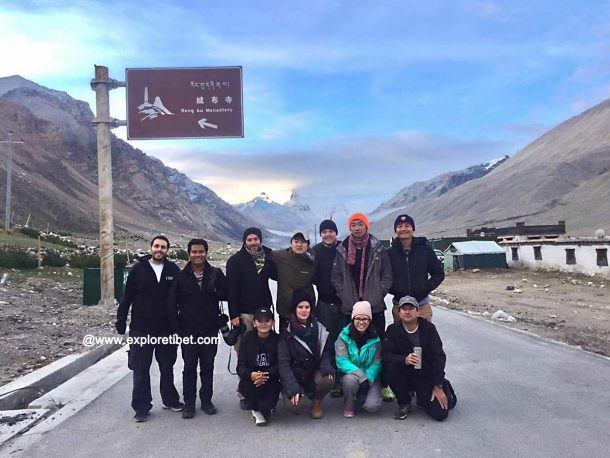
It is relatively easy to get to Lhasa from several dozen cities across mainland China, including Beijing, Shanghai, Chengdu, and many other cities, and you have the option of traveling by flight from more than 20 cities across China or by train from the seven Gateway Cities to Tibet. Trains area a great way to get to Tibet, as not only are they cheaper than flights, but you get to see the stunning views of the northern plains of Tibet and the Kunlun and Tanggula Mountains as you head for the Tibetan capital.
When traveling to Lhasa from mainland China, the only documents that you will need are your passport, visa, and Tibet Travel Permit, which is required for entry to Tibet. The remaining documents, including the Alien’s Travel Permit and the Frontier Pass, will be obtained by your guide once you arrive in Lhasa, as they require your original Tibet Travel Permit to apply for them. Processing takes just an hour for each, so there is no waiting around to get them for you.
The journey from Lhasa to EBC is done overland by car, and you will travel along the fascinating Friendship Highway through Gyantse, Shigatse, and Tingri to reach the base camp. A journey of more than 600 kilometers across the plateau, you will pass through the major cities of Tibet, as well as small village communities, and have the chance to visit and view some of the most spectacular sights on the plateau.
Everest Base Camp Accommodation
There is actually no hotel at Everest Base Camp, or at least not one that you might recognize. The accommodation at the base camp is very basic, and while it may not have the facilities of a five-star hotel in Lhasa, you will be amazed at what you do get there. You have a choice of the Rongbuk Monastery guesthouse or the tent guesthouses to stay in, and both have their good points.
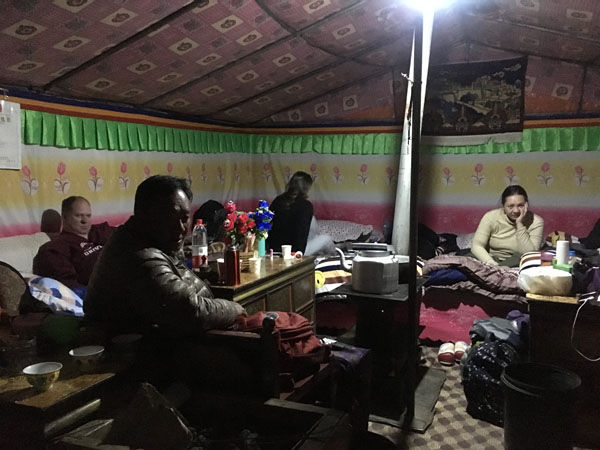
The monastery guesthouse at Rongbuk Monastery is basic accommodation for Tibet, with dormitory rooms that are relatively clean and tidy and set across from the actual monastery itself. The guesthouse does have a simple restaurant that has good local food, including noodles and noodle soup, fried eggs with rice, and plenty of tea and coffee. Surprisingly, the guesthouse does have Wi-Fi, though no heating or showers, and pit-type toilets that are little more than a hole in the ground with a wall around it.
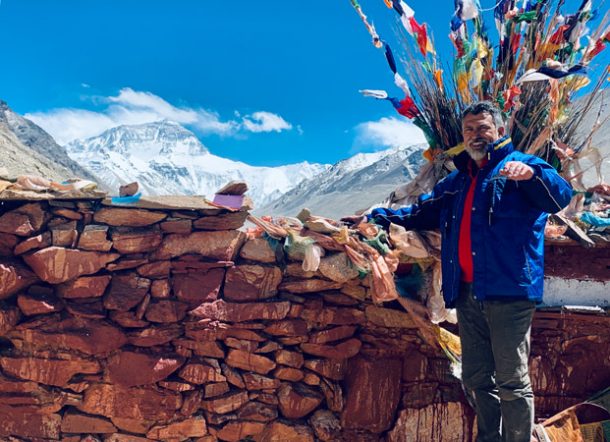
The Tent Guesthouses are a little more basic but do give you an idea of what it is like to live in a nomadic tent on the plateau. The tented camp is a little way outside the Rongbuk Monastery and has a large number of tents that are set up by locals to cater to the huge number of tourists that descend on the base camp in the peak season.
The tents usually contain a ring of beds/seats that run around the outside of the tent, with the usual tables for eating and the huge stove on which all food is cooked and which provides heating in the middle. Decorated in traditional Tibetan nomadic style, these guesthouses are an experience worth having, and while they also contain no shower or western toilet, the experience of staying in the yak-hair tents is one not to be missed.
Recent Posts
The Ultimate Guide to Tibet Tours, Travel, and Trekking Adventures
How to Explore Tibetan Culture
Exploring Lhasa:The Heart of Tibet
All Categories
- About Tibet
- book a Tibet tour
- Buddhism Practice
- Budget Tour
- China-Tibet Train
- Customized Tibet tour
- Historical Sites
- Hot Springs in Tibet
- News
- Photography in Tibet
- Tibet attraction
- Tibet Group Visa
- Tibet Motorcycle Tour
- Tibet Small Group Tours
- Tibet Tours and Tibetan Tour Guide
- Tibet Train
- Tibet Travel FAQs
- Tibet Travel Information
- Tibet Travel News
- Tibet Travel Permit Update
- Tibet Travel Prices Rises
- Tibet Trek
- Tibet Trekking Tour
- Tibet weather and climate
- Tibet Wildlife animals
- Tibet Winter Tour
- Tibetan Buddhism
- Tibetan Cultural Features
- Tibetan Culture and Poeple
- Tibetan Festivals
- What to see in Tibet



